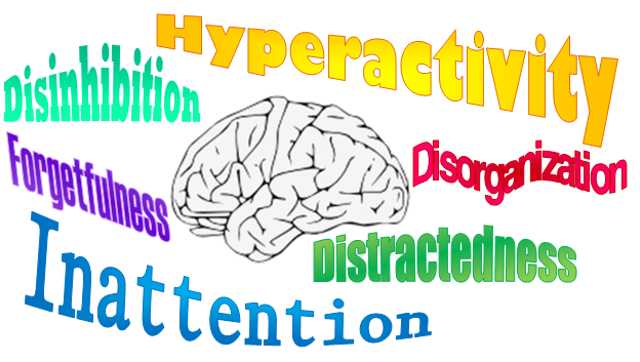Attention Deficit Hyperactivity Disorder is a brain disorder caused by the confluence of many genetic and environmental risk factors.
The Covid-19 pandemic has put mental health on the global radar. But several years ago, the Bollywood blockbuster, Par Taare Zameen, highlighted children’s mental health difficulties. The film, released in 2007, conveyed an indelible message. Children’s mental health issues are often overlooked and we need to keep the discussion current. In the rat race of life, the most vulnerable among us are easily forgotten.
In Par Taare ZameenEight-year-old Ishaan touched our hearts as he (and his mother) struggled with schoolwork. His art teacher Nikumbh (played by Aamir Khan) won our hearts with a role that emphasized the importance of recognizing and adapting teaching methods for children with mental health problems. The film highlights dyslexia, a problem that often coexists with an even more common problem in school-age children: attention deficit hyperactivity disorder, or ADHD. Studies conducted around the world have shown that about 6 percent of young people suffer from ADHD. An international consensus statement reported that there was no significant difference in ADHD rates between North America, Europe, Asia, Africa, South America, and Oceania.
ADHD is a brain disorder caused by the confluence of many genetic and environmental risk factors. Doctors define ADHD using three types of symptoms: inattention, hyperactivity, and impulsivity. Boys and girls show this by having trouble keeping their attention focused on the matter at hand and by not being able to complete tasks, such as homework. Some children, like Ishaan, may simply stare off into the distance, not paying attention as their imaginations run wild.
The impulsiveness of ADHD leads children to blurt things out before thinking carefully, or to act irrationally on impulse rather than what is appropriate for the social environment in which they find themselves. Finally, children with ADHD can be hyperactive. Fidgeting, fidgeting, and larger whole-body movements, such as swinging arms and legs, disrupt classes and distract the child with ADHD, as well as the people around them. How a boy presents her ADHD is complex and can be missed entirely, especially for girls who are less disruptive than boys but also suffer academically. The temptation might be to dismiss these symptoms as ‘kids being kids’, but that’s wrong.
This is relevant in the Indian context, where there is resistance to accepting a diagnostic label, such as ADHD, and medication options. These children are simply labeled as ‘very naughty’. It is often claimed as a matter of pride that the same thing was seen in the grandfather and the great-grandfather. They didn’t turn out that bad, so this kid will also ‘get over the same thing’; or they often turn to socio-religious methods to ‘cure’ the same.
Untreated ADHD can lead to difficulties in life, such as poor performance in school and even failure. Adults with ADHD tend to be more accident prone and may have trouble keeping a job. More seriously, many untreated adolescents and adults self-medicate through substance abuse and are at increased risk of sexually transmitted diseases and premature death. It’s important to let kids be kids, but ADHD will get in the way of having a happy childhood and can make it difficult to live a full life as an adult.
In Par Taare Zameen, children with these difficulties are often teased and teased. They are stigmatized by others, even adults, who call them “silly, idiotic, lazy, crazy!Teachers see them as a ‘waste of time’, especially when they focus on nurturing the talent of a select few who have a chance to be first in school. Children with ADHD suffer in silence and lose self-esteem; a severe consequence that can last a lifetime.
The movie Par Taare Zameen has an important message, which is that children with learning difficulties, such as dyslexia and ADHD, do not need to suffer like Ishaan. There are many ways to support a child with ADHD, both with and without medication. Most children respond well to a combination of treatments, including stimulant and non-stimulant medications, therapeutic supports, and lifestyle adjustments such as diet, exercise, and strategies that support children when they falter, so they don’t feel the sharp pain. loss of their self-confidence. In Taare Zameen Par, Ishaan looks out the window, his imagination taking him to serene and beautiful places. As scientists, we share a vision of a beautiful life for struggling children. We know that there are many strengths in people with ADHD, and we envision a future where ADHD is not a life sentence of struggle and failure.
This article was written in collaboration with: Prof. Stephen V Faraone, President of the World Federation of ADHD and Distinguished Professor, SUNY Upstate Medical University, USA; Dr. Mantosh Dewan, Distinguished Service Professor, Department of Psychiatry and Chairman, SUNY Upstate Medical University, USA; and Dr. Alka Subramanyam, Associate Professor, Topiwala National Medical College and BYL Nair Hospital, Mumbai.
Mel Lefebvre is Director of Communications; Sarojini M Sengupta, PhD, is CEO, AIMH (www.aimhinc.com). The opinions expressed are personal.
read all Last News, trending news, cricket news, bollywood news,
Indian news Y show news here. Follow us Facebook, Twitter Y Instagram.
